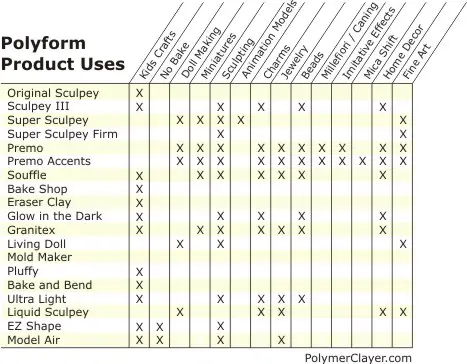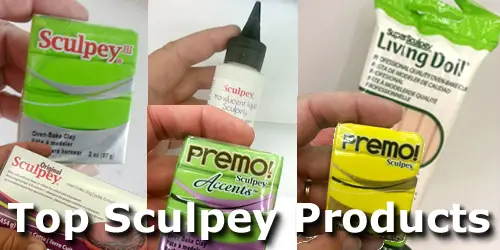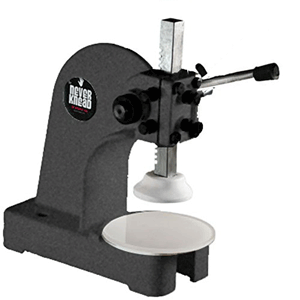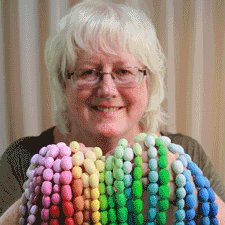Sculpey Clay For Dummies
Your
Smart Crafting Tips Guide to Polyform Products
Crafting with Sculpey clay sounds so simple. You’ve heard that this brand of polymer is often used for children’s crafts and beads. So how complicated could it be?
Then you do an online search and discover that there are almost 20 different Sculpey clay products made for all sorts of uses and skill levels by Polyform, the manufacturer. To further complicate things people have questions about; baking instructions, what are the best conditioning machines, which polymer clay softeners to use and whether to use competitive alternatives like Fimo, Kato Clay or Cernit.
Makes you want to just go back to paper, scissors and glue, right? Ok. Just take a deep breath and relax. Let’s start out with the most important questions...
Who Wants to Make What Using Sculpey Clay?
Who's Crafting? Polyform makes quality polymer for all skill levels. If you're buying for children or others with finger strength and dexterity challenges, choose one of the types listed with X's in the Kid's Craft column of the Polyform Product Uses chart below.
What's your project? If you've got specific idea in mind you'll probably be able to find a category that it fits into. Or you can use the chart below with this link to the official Sculpey clay site to discover which one's best for you.
Click to download the printable Sculpey clay uses chart with baking instructions summary.

The chart above is by no means a complete list of what you can do with Sculpey. But it does give you suggestions on which type to use to create sculptures, dolls, beads, jewelry, cover boxes, tool handles or add color for pieces made with metal clay.
NOTE: The Imitative Effects category includes techniques that allow you to form objects that look like wood, marble, turquoise, amber, coral, metal and even make animal friendly faux ivory that would do a walrus proud. Techniques like mica shift, mokune gane or millefiori caning allow you to make amazing patterns that have never been seen before.
Sculpey Baking Instructions for the Top 10 Polyform Polymer Products
For a complete chart of directions on how to bake other clay brands, go here. For particular Polyform polymer details, click the product links below.
What temperature’s best? Most (but not all) Polyform products bake at 275F (130C). Yeah, I know 275F does not equal 130C. It’s written that way on almost all the packages and it drives me crazy. But don't fret, there’s a temperature range at which polymer cures, it doesn't have to be exact.
For how long? Oven times depend on how thick the polymer clay layers are. The standard is 15 minutes for every ¼ inch (6 mm) thickness or less. Add another baking time unit for each additional quarter inch on your piece. Some clays like Premo take a bit longer. Check for more details at the link for the specific Polyform product below.
Do not exceed 1 inch of unbaked clay. Very thick layers sometimes develop cracks on the surface during the curing process. Besides, 1 inch is one HOUR or more in the oven. Use an armature padded with aluminum foil and put thinner layers of polymer over it to create larger, or thicker forms. Apply a tiny bit of Liquid Sculpey Clay between the baked and unbaked pieces to act as a binder once its cured. Harden the first layer and then rebake as you add more details.

IMPORTANT: Click on the links below for specific baking details for the most popular types of Polyform Sculpey. I've also included their pros and cons, how they compare to similar options offered in competing brands, relative costs and where to buy them so that you can choose which works best for your project.
Sculpey Original Polymer Clay - Polyform's inexpensive intro clay. Made in 2 colors, White and Terra
Cotta (which actually feels a bit like ceramic when cured). Packages come in...
Sculpey III - Good for kids to intermediate crafters. It's softer and easier to condition than the original or Super Sculpey. Elementary school teachers...
Premo Sculpey - This one's a bit stiffer than Sculpey III so its harder to condition.
Artists color palette makes it easy to mix up custom hues. It's often used for...
Premo Accents - Same baking instructions and characteristics as Premo, but it comes in 'special effects' formulations like translucents and...
Super Sculpey - Many doll makers love this stuff because it holds very fine details and can be smoothed easily for flesh textures. It only comes in...
Super Sculpey Firm - It comes in a dark gray which shows every detail through a camera lens. A stop animator's favorite. This material holds...
Glow in the Dark - This Sculpey clay's great for Halloween kids crafts! They come in a 6 pack sampler with 1 oz bars. But only 4 of them...
Pluffy - Almost too much fun for kids. Kids can make their own bath toys because this material... still writing this
UltraLight - Wonderful option for armatures for larger sculptures and paper crafting. Very strong and rigid in thicker layers. But it can be very flexible if you...coming soon!
Not Clay But These are Must-Have's for Polymer Clayers
Translucent Liquid Sculpey - I love this stuff. It has a million uses from creating photo transfers to unique surface treatments when mixed with oil paints or mica powders. It also makes a great 'glue' to bond baked and unbaked clays. The bond is only permanent after curing, so you'll have to brace or support it before and during its time in the oven. The best way to find out how to use this medium is to read Ann and Karen Mitchell's Liquid Polymer Clay: Fabulous New Techniques for Making Jewelry and Home Accents.
Never-Knead Clay Conditioner Machine - Not a pasta machine, it's a heavy duty metal tool built like a drill press that helps get even old, hard polymer clay blocks moving again. And its easy to operate even for those of us with injuries or hand and shoulder problems! Check out the reviews on Amazon and decide for yourself. Click on the image to the right for more details.
Clay Softener - Don't throw away that dry, crumbly clay! Add a couple of drops of this and you may be able to recondition that old polymer stash, saving you money. This material's also known as diluent. If you run out or can't find softener, you can use mineral oil, Mold Maker or a bit of Vaseline to renew old clay.
My Sculpey Clay Review Summary
I hope that I've managed to help you figure out which of these Polyform products is right for your particular project. For those experienced clayers who've managed to read to the bottom of this article, did I leave anything out? Any hints that you can add would be a big help to people who are new to Sculpey Clay and are greatly appreciated.
~Nancy Ulrich
|
|
|
What's Your Sculpey Clay Question?
PolymerClayer Home › Sculpey Brands and Others


